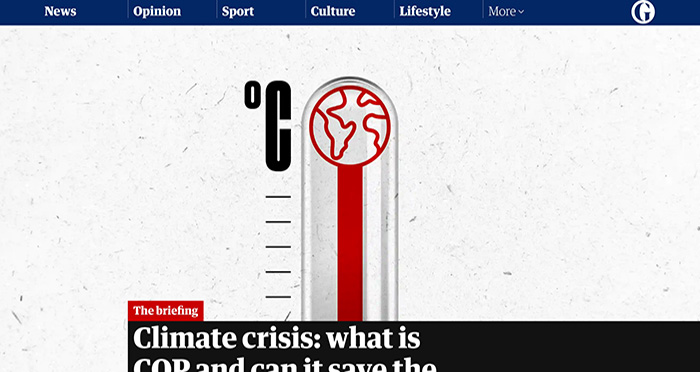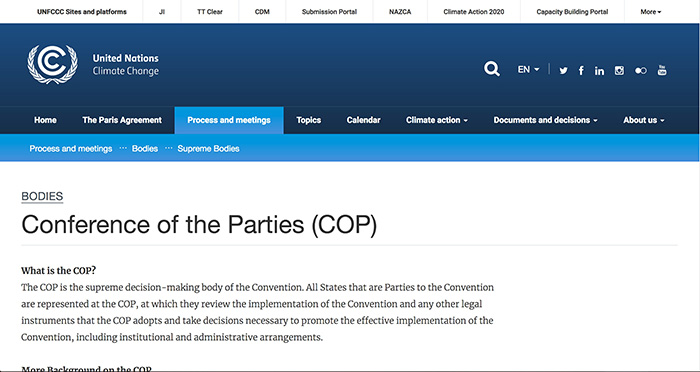What happens at a COP?
A little bit of history...
In 1992, countries joined an international treaty, the United Nations Framework Convention on Climate Change, as a framework for international cooperation to combat climate change by limiting average global temperature increases and the resulting climate change, and coping with impacts that were, by then, inevitable.Under the agreement every country on earth is treaty-bound to “avoid dangerous climate change”, and find ways to reduce greenhouse gas emissions globally in an equitable way. COP (Conference of the Parties) are the annual meetings to evaluate the job done and what we still have to do.
March, 1995
COP1 Berlin
The very first Conference of the Parties. The signatory countries agreed to meet every year and assumed responsibility for maintaining control over global warming.
December 1997
COP3 Kyoto
The Kyoto Protocol was officially adopted, in which industrialized countries made commitments for the period 2008-2012 to reduce greenhouse gas emissions by 5.2% against the level of 1990.
December 2009
COP15 Copenhagen
READ MORE
November 2011
COP17 Durban
In Durban, all the countries finally agreed to start a process of emission reduction. This included the main polluting countries: the United States and the major emerging economies (Brazil, China, India and South Africa).
READ MORE
November 2015
COP21 Paris
Arguably the most significant COP to date. For the first time in 20 years of negotiations, nations committed to limiting greenhouse gas emissions and adopted a universal agreement to fight climate change:
November 2015
The Paris Agreement
COP21 saw the signing of the Paris Agreement – a legally binding international treaty on climate change. The main aim of this agreement is to keep the average global temperature below 2°C with respect to the pre-industrial level, although countries committed to making limiting it to 1.5°C thus avoiding the most catastrophic effects of climate change.
READ MORE
December 2019
COP25 Madrid
Focused on the operating rules of the Paris Agreement. Especially settling the rules of the global carbon market to help countries cut emissions and to fund measures that reduce emissions in developing countries.
November 2021
COP26 Glasgow
How does a COP work?
A COP is usually two weeks long during which different sessions of negotiation happen, and also meeting with the Civil Society. There’s also some side-event, thematiques conferences that can highlight a subject. Some negotiators sometimes participate in these conferences. Negotiations are led by environment ministers and civil servants, aided by UN officials. Nearly every country is expected to send a voting representative at the level of environment secretary or equivalent, and the big economies will have extensive delegations.
COPs are the only forum on the climate crisis in which the opinions and concerns of the poorest countries carry equal weight to that of the biggest economies, such as the US and China. Agreement can only come by consensus, which can be frustrating and means some countries – notably Saudi Arabia – can act as a drag on more ambitious action, but gives COP decisions global authority. Each of the 196 nations on earth, bar a few failed states, is a signatory to the UNFCCC foundation treaty and no country has yet opted to withdraw from it.
Learn More
- VIDEO
The inside story of the Paris climate agreement
Christiana Figueres.
- VIDEO
Two Weeks of COP 21 in 10 Minutes
- VIDEO
The Paris Agreement Simplified
Stay up to Date, sign up for Our
NEWSLETTER
- Association La Fresque du Climat is registered as a charity in France
- CHARITY INFO
- CHARITY INFO
- 4 rue Elizabeth Vigée-Lebrun, 75015, PARIS , France
- Climate Collage Facebook Page
Get In Touch.
- Climate Collage COP26 General Group
- michael.dore@climatecollage.org
- contact@climatecollage.org


